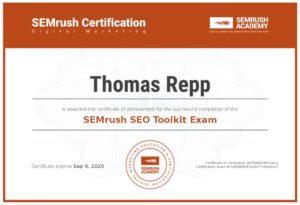 For years, Search Engine Optimization (SEO) has been the gold standard for getting your industrial B2B business found online. Companies have poured millions into keyword research, backlink strategies, and content marketing to rank on Google’s first page. But here’s the wake-up call: SEO as we know it is dying. The future belongs to Answer Engine Optimization (AEO) … and if you’re not adapting, your digital presence will fade into obscurity.
For years, Search Engine Optimization (SEO) has been the gold standard for getting your industrial B2B business found online. Companies have poured millions into keyword research, backlink strategies, and content marketing to rank on Google’s first page. But here’s the wake-up call: SEO as we know it is dying. The future belongs to Answer Engine Optimization (AEO) … and if you’re not adapting, your digital presence will fade into obscurity.
What’s Happening to Traditional SEO?
Google isn’t what it used to be. The days of typing in a query, scanning a list of blue links, and clicking on a website are disappearing fast. Today, searchers want answers immediately, and AI-powered search engines, voice assistants, and chatbots are reshaping how those answers are delivered.
Instead of scrolling through search results, users are now asking AI-driven tools like ChatGPT, Google’s Gemini, Claude and Perplexity AI to give them direct responses.
So what does this mean for B2B industrial companies? If your content isn’t optimized to be THE answer, you won’t just drop in rankings … you’ll disappear altogether.
AEO: The New Game in Town
Answer Engine Optimization (AEO) is all about structuring your content so that AI-driven search engines, chatbots, and voice assistants recognize your brand as the authoritative answer to industry-specific queries.
Instead of ranking for a keyword phrase, you need to own the answer.
How AEO Differs from SEO
| SEO (Old Model) | AEO (New Model) |
|---|---|
| Focus on ranking in Google’s 10 blue links | Focus on being the direct answer in AI-driven search tools |
| Keywords drive visibility | Context, authority, and clarity drive visibility |
| Backlinks and technical SEO are key | Structured data, FAQ content, and entity-based optimization matter more |
| Users click through to websites | Users get answers instantly without leaving the search page |
How to Optimize for AEO
B2B industrial marketers need to rethink their content strategy. Instead of just ranking on Google, the goal is to be the AI’s preferred answer when your prospects ask industry-related questions.
1. Focus on Answer-Driven Content
Most industrial marketers still write for SEO: keyword-stuffed blog posts, product pages with spec sheets, and generic service descriptions. But AI doesn’t work that way. It pulls structured, well-defined answers from websites with clear question-and-answer formats.
Action Steps:
-
Write content that directly answers common industry questions. Sound familiar? Yep, great, accurate and authentic content still works.
-
Use FAQ or a KnowledgeBase page to structure information in a way that AI can easily parse.
-
Add long-form guides that fully explain industry problems and solutions.
2. Optimize for AI and Voice Search
More B2B buyers are using voice search and AI chatbots to find suppliers. If your content isn’t optimized for these queries, you’ll be left behind.
Action Steps:
-
Use conversational language in your content (how people actually talk and ask questions).
-
Optimize for long-tail keywords like "What’s the best material for high-heat industrial valves?"
-
Make sure your answers are concise (Google prefers 40-50 words for voice search responses).
3. Leverage Structured Data (Schema Markup)
AI-driven search engines love structured data because it helps them understand your content. Schema markup tells search engines exactly what your page is about and increases the chance of getting featured in rich snippets and AI-generated answers.
Action Steps:
-
Use FAQ schema to mark up common industry questions.
-
Add HowTo schema for step-by-step instructions.
-
Ensure your company’s name, services, and location are correctly marked up for AI-driven local search.
4. Build Topical Authority
Google’s new ranking models prioritize subject matter experts over traditional keyword ranking. If your brand isn’t seen as an authority in your niche, AI-driven search engines won’t trust you as the best answer.
Action Steps:
-
Create pillar content (long-form, authoritative guides on core industry topics).
- Then link your blog topics back to pillar pages and vice versa
-
Publish regular thought leadership content on LinkedIn and industry sites.
-
Use AI-assisted content tools to analyze gaps in your topical coverage.
5. Emphasize User Experience (UX) and Fast Load Times
Google still prioritizes Core Web Vitals, and AI-driven search engines will prefer answers from websites that load fast and offer a smooth experience.
Action Steps:
-
Improve mobile performance (most AI searches happen on mobile devices).
-
Reduce page load time (under 3 seconds is ideal).
-
Use clear formatting (short paragraphs, bullet points, and bolded key phrases help AI understand your content better).
Why AEO Matters for B2B Industrial Companies
If your industrial brand relies on being found online, you can’t ignore this shift. 70% of B2B buyers start their research online, and that number is growing as AI-powered search tools get better at answering complex industrial questions.
The problem? Most of your competitors aren’t prepared. They’re still stuck in traditional SEO, if that, while search behavior is changing. That’s why there’s an open lane for early adopters, like you, to own the answer space in their industries.
The Digital Moat Opportunity
At The Repp Group, we call this a “Digital Moat” ... a competitive advantage so strong that your brand becomes the go-to answer in your niche. AEO is one of the most overlooked opportunities for B2B industrial firms, and those who move fast will dominate the AI-driven search landscape.
Are you ready to build your Digital Moat with AEO? Let’s talk.
Want to know more? Go to What We Do or Contact Me in the menu above. Or give me a call at 269-375-0349.
Author:Tom Repp
A passionate marketer attempting to change the way industrial marketers leverage the web as a growth-oriented, lead generation machine. View all posts by Tom Repp




